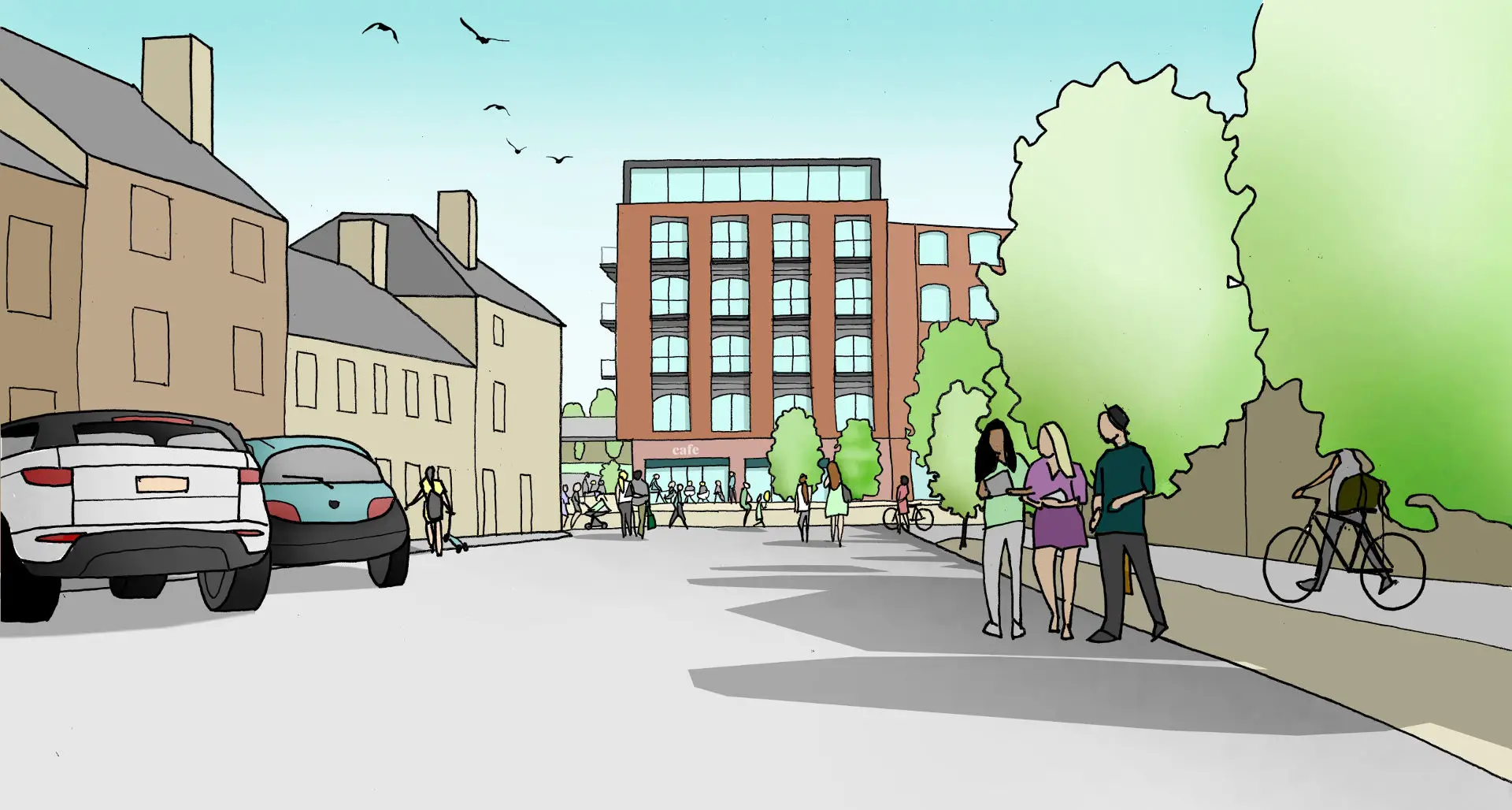The Isle of Wight Council has taken the next step forward in regenerating the county town — by approving the Newport Harbour Masterplan.
Dramatic changes are in store for the waterfront and surrounding areas but you won’t see any changes yet.
So what can you expect to see? When will it happen? Here’s an explainer on everything you need to know about the plans:
What’s happened?
On Thursday (12th November) the Newport Harbour Masterplan was approved by the Isle of Wight Council to become a statutory planning document.
The masterplan has been in the works for almost three years since the Regeneration Members’ Board made the decision to create a masterplan in February 2018.
After some more work to understand the flood risk on certain plots involved in the plan, requested by the Environment Agency, the council will formally adopt it.
And what does that mean?
As a statutory planning document, the Newport Harbour Masterplan will form a base, or a guide, for the ideas going forward — something that can be pointed to as a reference in future planning applications but will not be used as an official planning document.
So, what’s the plan?
The Masterplan is a key part of the regeneration of Newport, the Isle of Wight Council has said. It will, the authority hopes, attract more people to the heart of the Island and turn the area into a vibrant social and cultural destination.
What does that include?
Houses; a footbridge over the River Medina connecting Seaclose Park with the other side of Newport; a multi-storey car park to encourage people to walk into the town and park; new commercial and office space; a new gateway to the harbour in Seaclose Park; either a community centre or new hotel on the current County Hall car park and a new focal square.
What about the Riverside Centre?
A couple of options have been suggested for the current community hub including expanding the existing site or building a new cultural venue and destination.
In the final report of the masterplan, the site said only the Old Hall building is ‘potentially of heritage interest’ but the other buildings are not of high quality and sit awkwardly on the site.
Cllr Michael Lilley said the centre was the hub of the voluntary sector for the Isle of Wight and sought reassurance that the voluntary organisations currently based at Riverside will benefit from the regeneration, building on their work. Cllr Dave Stewart, the leader of the council, said he would ensure those groups were looked after.
How many houses are proposed?
Originally more than 260 residential units were planned for the area, with some on both sides of the harbour and on Seaclose Park.
Now, following a campaign to remove the houses from the entrance to the park, the total has been taken down to 228 units.
What happened with Seaclose Park?
To fund some aspects of the development, housing was proposed to be built on the entrance to Seaclose Park, on Fairlee Road, ultimately building over the currently still standing Fairlee Road Service Station.
The backlash from the local community saw a petition and campaign launched by local ward representative Cllr Matthew Price, and other Newport councillors, to get rid of the housing.
After gaining more than 3,000 signatures, and discussions with relevant parties, the Isle of Wight Council backtracked on the decision.
Although, Cllr Barry Abraham, the Isle of Wight Council’s chief of planning and housing, said other brownfield sites in and around Newport are being looked at to put the housing removed from Seaclose.
Will the development will start now?
No — planning applications will still have to be submitted and approved by the council before the majority of changes can be made around the site.
The development has been planned in three phases, which could take up to 15 years to complete once started.
However, the last bits of the masterplan are being ironed out, including areas of housing, the flood risk and the approval of a Harbour Revision Order.
What is a Harbour Revision Order, and what’s the problem?
A Harbour Revision Order (HRO) is legislation the Isle of Wight Council has submitted to the Marine and Maritime Organisation (MMO).
The authority is hoping to change the length of lease some of the land in the harbour currently has. At the moment, the maximum term is for three years, which constraints the development.
The HRO was submitted in 2017 and the council is still awaiting a response from the MMO.
What is the next step?
Going forward, the Cllr Wayne Whittle, cabinet member for regeneration and business development, has said plots in the masterplan will be ‘actively marketed’ to support the council’s recovery plans.
Government funding will also be sought to help make some of the plots viable and for supporting the wider infrastructure schemes such as the footbridge.
How do people feel about it?
Speaking before the approval of the masterplan, council leader Cllr Dave Stewart said he thought it was an excellent piece of professional work which will bring Newport alive.
Cllr Julie Jones-Evans, ward member for Newport Central and part of the Shaping Newport project, said with all of the harbour’s potential, she cannot fault the plans as it was a good vision.
At a meeting of the corporate scrutiny committee, she said:
“It is absolutely vital we get an iconic building out of this — a conferencing facility, hotel, all the things the capital of a county should have.
“There is still a long way to go … but we are already three years down the road and I would like to endorse this and thank all the officers for their hard work and the community input.”
This article is from the BBC’s LDRS (Local Democracy Reporter Service) scheme, which OnTheWight is taking part in. Some alterations and additions may be been made by OnTheWight. Ed





